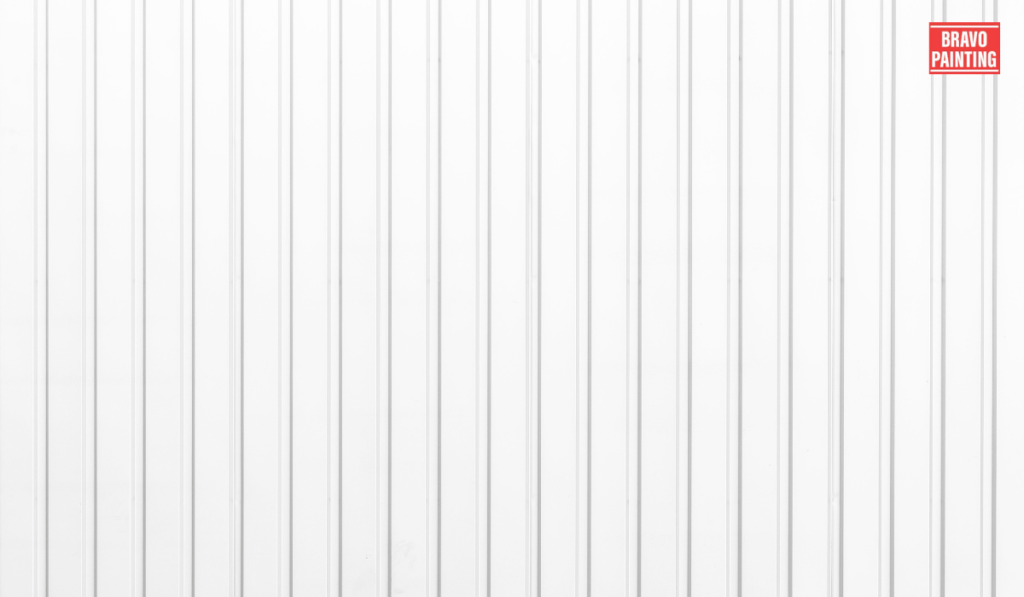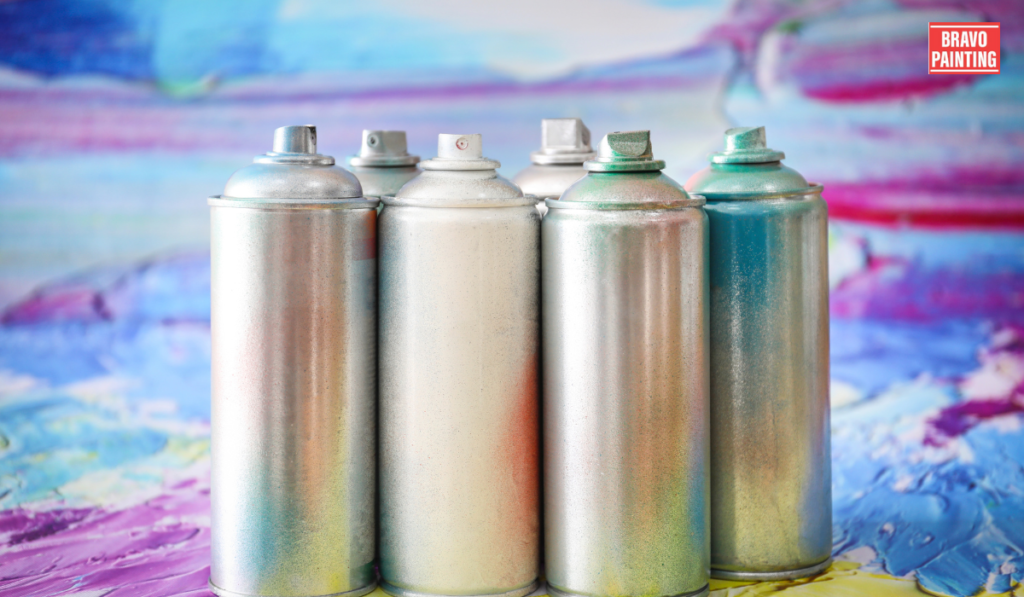Aluminum siding is popular for homeowners due to its durability, low maintenance requirements, and sleek appearance. However, over time, the color of aluminum siding may fade or become outdated. In such cases, painting aluminum siding can be a cost-effective solution to rejuvenate the exterior of your home. In this article, we will inspect the process of painting aluminum siding, the factors to consider, the proper techniques, and the benefits and drawbacks of painting aluminum siding in a darker color.
Importance of Exterior Aesthetics and Personal Preferences
The exterior of your house plays a notable role in creating a favorable first impression and enhancing its overall curb appeal. The appearance of your house reflects your style and taste. By choosing the right color for your aluminum siding, you can change the view of your home & make it stand out in the neighborhood. Painting aluminum siding allows you to customize the exterior according to your preferences and achieve the desired aesthetic appeal.
Understanding Aluminum Siding
Characteristics and Benefits of Aluminum Siding
Aluminum siding is known for its durability, as it is resistant to rot, insects, & fire. It provides excellent protection against the elements, making it a popular choice for homeowners in various climates. Aluminum siding is lightweight, which makes it easier to install and handle during the painting process. Additionally, it requires minimal maintenance, as it does not need to be repainted as frequently as other materials.
Standard Colors and Limitations in Color Options
Aluminum siding comes in various standard colors, including white, beige, gray, and green. However, if you want to paint aluminum siding a darker color, there are certain limitations. For example, darker colors absorb more heat, which can cause the siding to stretch & contract more, leading to durability issues. Therefore, choosing a paint color formulated explicitly for aluminum siding is essential to minimize adverse effects.
Challenges of Painting Aluminum Siding

Painting aluminum siding presents unique challenges compared to other types of exterior surfaces. Aluminum is a smooth and non-porous material, which makes it difficult for paint to adhere correctly. Therefore, surface preparation and suitable primers are crucial to ensure proper adhesion & longevity of the paint job. Additionally, weather conditions, such as high humidity or extreme temperatures, can affect the drying and curing process of the paint.
Factors to Consider
Preparing the Surface for Painting
Before painting aluminum siding, proper surface preparation is essential for optimal results. This includes cleaning the siding thoroughly to remove dirt, grime, and loose paint. A power washer or a combination of soap, water, & a soft brush can clean the surface. It’s essential to allow sufficient time for the siding to dry completely before painting.
Climate and Weather Considerations
The climate in your area plays an outstanding role in the duration of a paint job on aluminum siding. Extreme temperatures, high humidity, or exposure to harsh weather conditions can impact the durability of the paint. Therefore, it’s advisable to choose a time of year when the weather is moderate, with low humidity and temperatures between 50°F and 85°F (10°C & 29°C), for the best results.
Impact on Energy Efficiency
The color of your siding can affect the energy efficiency of your home. Lighter colors tend to throw back heat, while darker colors absorb heat. If you live in a cozy climate, painting aluminum siding a darker color may result in increased heat absorption, potentially affecting the cooling efficiency of your home. Consider the climate and energy efficiency goals when deciding on the color for your aluminum siding.
Long-term Maintenance and Durability
Painting aluminum siding can extend its lifespan and enhance its resistance to weathering. A properly painted and maintained aluminum siding can last for many years, reducing the need for frequent replacements. However, regular maintenance, such as cleaning and inspecting for any signs of harm or peeling paint, is essential to ensure the longevity and aesthetics of your siding.
Proper Techniques for Painting Aluminum Siding
Cleaning and Preparing the Surface
Before applying paint, it’s crucial to clean the aluminum siding thoroughly. First, remove any loose paint, dirt, or debris using a scraper or sandpaper. After cleaning, rinse the siding with water and let it dry completely. Ensure that the exterior is smooth and free of any imperfections before proceeding to the next step.
Priming and Choosing the Right Paint
Applying a primer specifically formulated for use on aluminum siding is essential to promote adhesion and improve the durability of the paint. The primer creates a suitable surface for the paint to adhere to & helps to prevent peeling or blistering. Choose a high-quality exterior color compatible with aluminum siding and offers excellent weather resistance.
Applying Paint with Brushes, Rollers, or Sprayers
You can use brushes, rollers, or sprayers when painting aluminum siding. Brushes and rollers are suitable for smaller areas or when a more precise application is required. Sprayers, however, can cover larger areas quickly and provide a more even finish. Whichever method you choose, apply the paint evenly and follow the manufacturer’s instructions for drying times between coats.
Best Practices for Achieving an Even Finish
It’s essential to follow certain best practices to achieve a professional-looking finish. First, start painting from the top and work your way down, ensuring each stroke overlaps the previous one slightly. Please pay attention to any drips or runs and correct them immediately to avoid unevenness. Finally, apply multiple thin coats rather than a single thick coat to achieve a smooth and even finish.
Benefits and Drawbacks of Painting Aluminum Siding Darker
Enhanced Curb Appeal and Customization Options
Painting an aluminum siding a darker color can dramatically enhance your home’s curb appeal. Darker shades create a striking contrast and can make your home attitude out in the neighborhood. It also provides an opportunity for personalization and allows you to express your separate style and preferences.
Potential Challenges with Heat Absorption and Expansion
One of the potential drawbacks of painting aluminum siding a darker color is increased heat absorption. In addition, darker colors absorb more sunlight, which can cause the support to dilate and contract more than lighter colors. This expansion and contraction may lead to premature wear and tear, affecting the overall durability of the siding.
Impact on Energy Efficiency and Cooling Costs
As mentioned earlier, darker colors absorb more heat.
In areas with hot summers, opting for a darker color when painting aluminum siding can enhance heat absorption, potentially reducing cooling expenses. Consider the climate in your area and consult with professionals to determine the best color options that balance aesthetics and energy efficiency.
Personal Experiences and Testimonials
Many homeowners have successfully painted their aluminum siding a darker color and are satisfied with the results. However, it’s important to note that personal experiences may vary depending on elements such as climate, preparation, quality of paint, and maintenance. Therefore, before painting aluminum siding, gather personal testimonials and consult with professionals to make an informed decision.
FAQs
Can I paint aluminum siding myself, or should I hire a professional?
Painting aluminum siding can be a DIY project but requires careful preparation and execution. If you have experience with painting and feel self-assured in your skills, you can tackle the project yourself. However, if you are unsure or need more tools and expertise, hiring a professional painter specializing in aluminum siding is advisable.

Will painting aluminum siding void any warranties?
It’s essential to check the warranty information provided by the manufacturer of your aluminum siding. Some warranties may require specific maintenance procedures or prohibit alterations, including painting. Review the terms of your agreement & consult with the manufacturer or a professional before painting to avoid any potential issues.
What are the recommended paint types for aluminum siding?
When painting aluminum siding, it’s crucial to use paint specifically formulated for exterior use and suitable for application on aluminum surfaces. Acrylic latex paint is commonly recommended for aluminum siding due to its durability, weather resistance, and ease of application. Consult with your local paint store or professionals to choose the finest paint type for your project.
Is it necessary to use a primer before painting aluminum siding?
Using a primer is highly recommended when painting aluminum siding. A primer helps to promote adhesion, improve the durability of the paint, and provide a suitable surface for the paint to adhere to. Choose a primer specifically formulated for aluminum surfaces and follow the manufacturer’s instructions for proper application.
Can I paint the aluminum siding that has already been painted?
Yes, you can paint aluminum siding that has already been painted. However, proper surface preparation is crucial for the new paint to adhere correctly. Clean the surface, remove any loose or peeling paint, and ensure the siding is smooth before applying a fresh coat of paint. Following the same preparation and painting steps is essential as painting bare aluminum siding.
How long does the paint on aluminum siding typically last?
The paint’s lifespan on aluminum siding can vary depending on various factors such as climate, quality of color, surface preparation, and maintenance. A well-painted aluminum siding lasts 10 to 15 years or longer with good care & maintenance. Regular inspections, touch-ups, and cleaning can help extend the paint’s lifespan.
Will painting aluminum siding affect its resistance to rust and corrosion?
Aluminum siding is naturally resistant to rust and corrosion; painting it properly should not significantly impact this resistance. However, ensuring the surface is adequately prepared and the paint is put in according to the manufacturer’s instructions is essential. In addition, regular maintenance, including inspections and touch-ups, will help maintain the siding’s resistance to rust and corrosion.
Can I change the color of my aluminum siding from light to dark?
Yes, you can change the color of your aluminum siding from light to dark. However, it’s essential to consider the potential challenges of darker colors, such as increased heat absorption and expansion. Proper surface preparation, suitable primers, and high-quality paint are necessary to ensure a successful color change and minimize potential issues.
What precautions should I take when painting aluminum siding near windows and doors?
When painting aluminum siding near windows and doors, taking certain precautions is essential to avoid any damage or unwanted paint on these surfaces. Use painter’s tape to protect the surrounding areas & cover windows & doors with plastic or drop cloths. Take your time and apply the paint carefully, ensuring that it doesn’t drip or splatter onto adjacent surfaces. Remove the tape and protective coverings once the paint is dry.
How do I ensure an even and smooth finish when painting aluminum siding?
Proper surface preparation and application techniques are crucial to achieving a smooth finish when painting aluminum siding:
- Clean the siding thoroughly, remove loose paint, and ensure a smooth surface before applying primer and paint.
- Use long, even strokes when applying the color, and avoid excessive brushing or rolling, which can create unevenness.
- Apply multiple thin coats, allowing sufficient drying time between each coat, for a professional-looking finish.
Will painting aluminum siding help improve energy efficiency?
Painting aluminum siding alone may not significantly improve energy efficiency. The primary factors that impact energy efficiency are insulation and the overall quality of the siding itself. However, choosing lighter colors for your aluminum siding can help reflect heat and reduce cooling costs in warmer climates. Consider adding insulation or upgrading to energy-efficient siding options for significant energy efficiency improvements.


